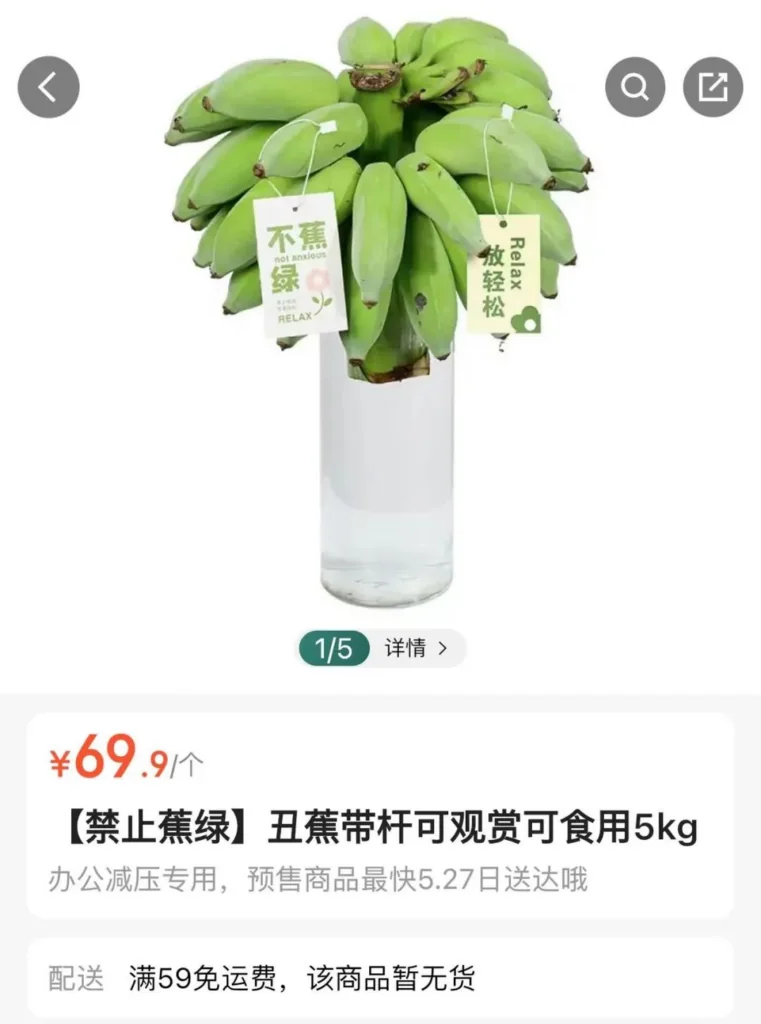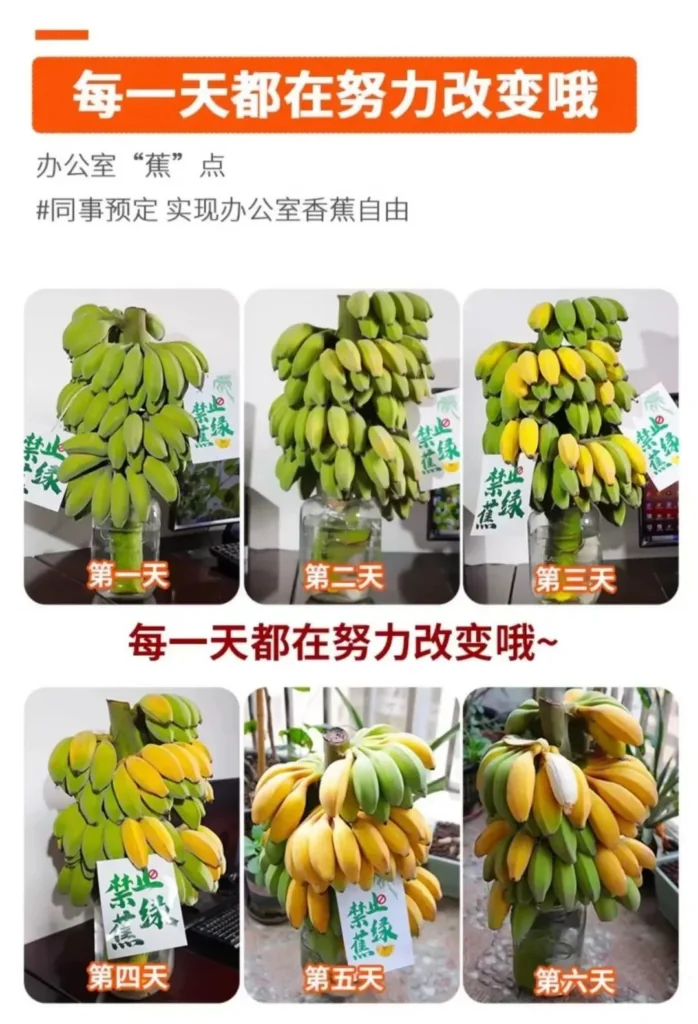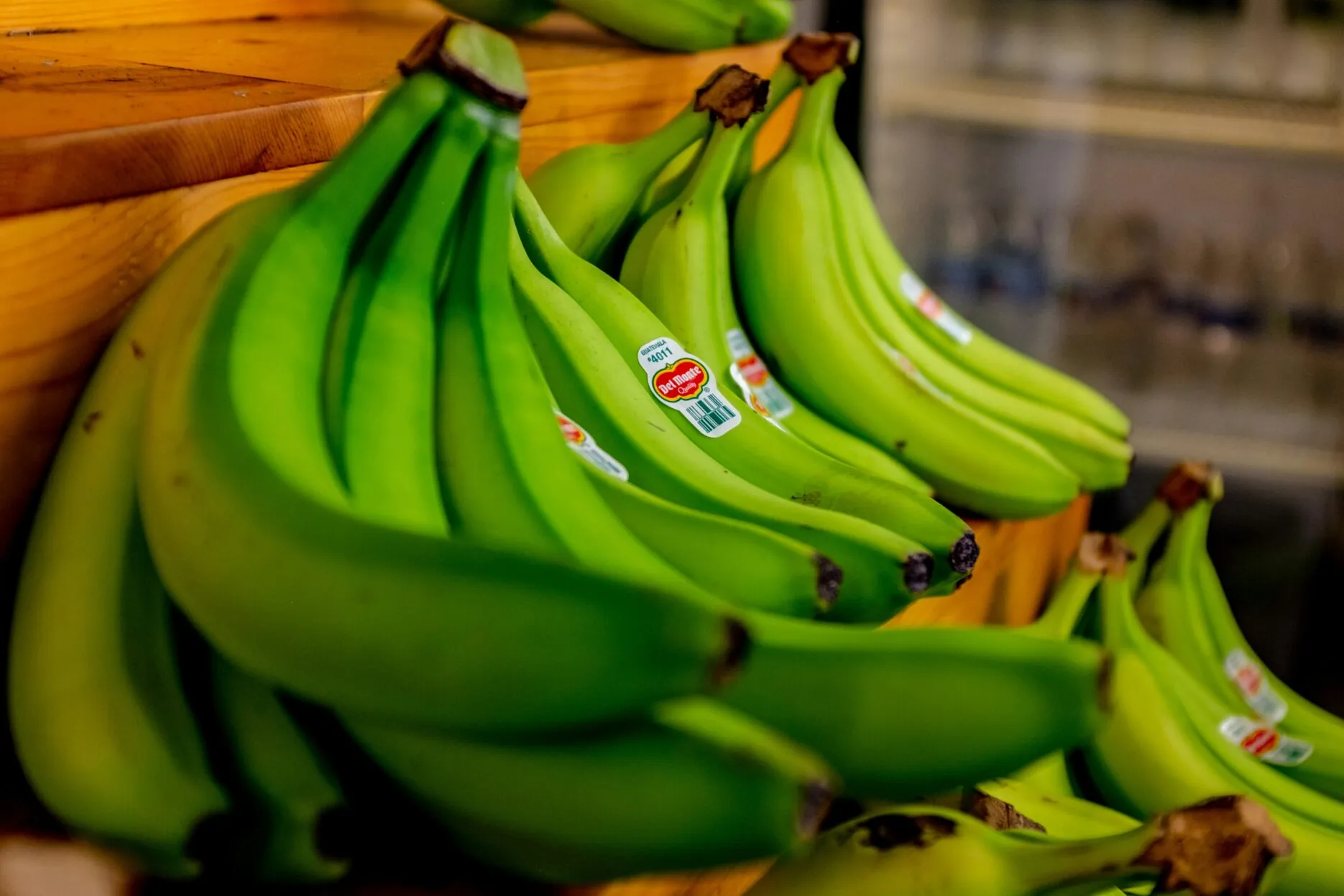‘Banana green’ has recently become a popular variety of banana. The hashtag #Employees of large factories are leaving to sell banana green with a monthly income of 2 million RMB (approx. 276,000 USD)# (大厂员工离职后卖蕉绿月入200万) even trended on Weibo, garnering 130 million views. ‘Banana green’ refers to unripe green bananas. The trend involves placing these green bananas on workstations, waiting for them to ripen from green to yellow, to symbolise the prevention of anxiety. Many young people have adopted this practice, embracing the pun culture associated with ‘banana green’ as a metaphor for ‘managing anxiety’ (禁止蕉绿).
On the e-commerce platform 7 Fresh APP, ‘banana green’ is priced at 69.9 RMB (approx. 9.65 USD) for 5kg. For 0.5 kg, ripe plantains—cooking bananas—usually cost about 7 RMB (about 0.97 USD). Emphasising its hydroponic freshness, the marketing for “banana green” promises a weekly transformation from green to yellow.
Like office nap beds and lotteries, “banana green” has evolved into a new office subculture following trends. Employees are either busy planting or waiting to eat the bananas, adding a unique dynamic to the office environment.


Lin Wenhai, an ex-employee of large factories who led the trend, explained, ‘Young people enjoy self-mockery. The banana green, with its inherent pun, offers emotional value and a social aspect, aligning well with the needs of young office workers. My company handled 10,000 orders a day at its height, relieving anxiety for 3 million employees and generating over 2 million RMB monthly.’
“Seeing the bananas change from green to yellow reflects my path from a fresh college graduate to a seasoned employee,” netizens have said. Others said hydroponic bananas ripen too fast resulting in binge eating and a new type of anxiety.
Young people love the “banana green” not only for the emotional value but also for its social connotations. The changing needs and lifestyles of works continue to show in the consumer market.









